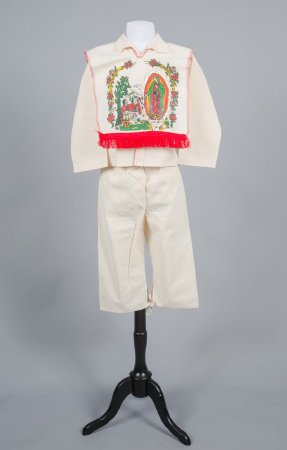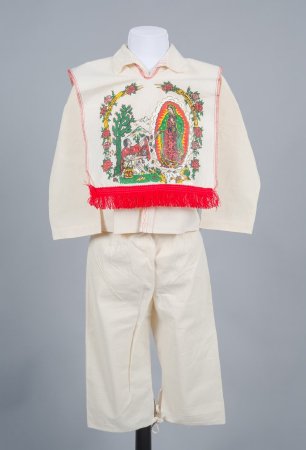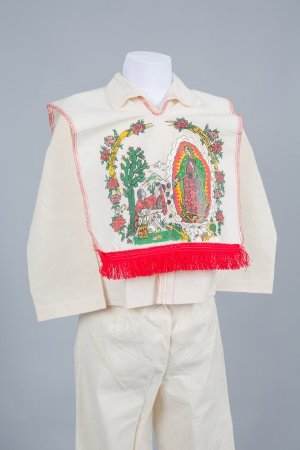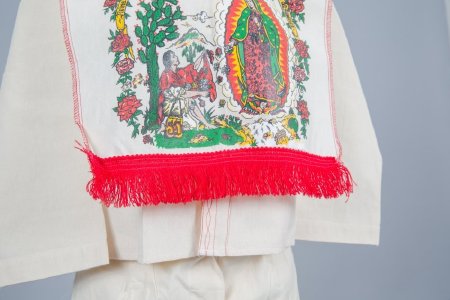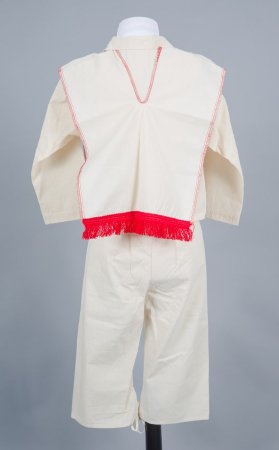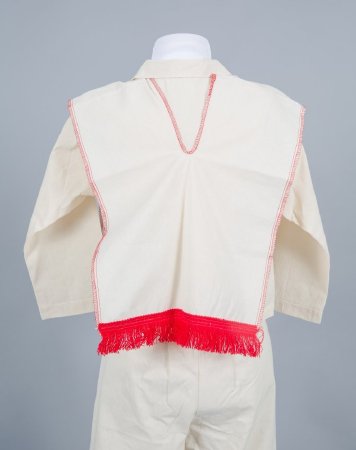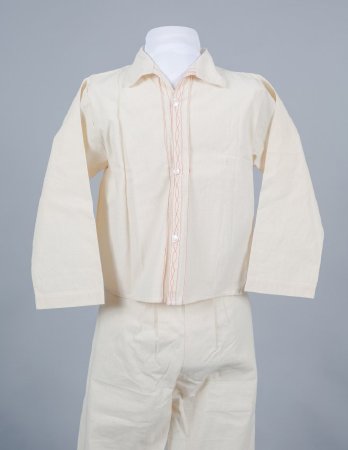Object ID:
2006.1.2-A-C
Label/Maker:
Unknown
Date:
c. 2006
Object Details:
This young boy's ceremonial, or festival clothing, from the early part of the twenty-first century is made of starched, unbleached muslin. The shirt has a simple collar and long, set-in sleeves. The opening at center front is folded and tucked with decorative machine embroidery in red threaded narrow strips. A decorated, rectangular tilmàtli depicts the apparition of the Virgin of Guadalupe in a heat-transferred design with colors of red, green, bright yellow, black, and white. A red synthetic fringe is sewn along the lower edge at both front and back of the overlay. The design displays an outdoor scene at Tepeyac Hill, where a man, presumably Juan Diego, kneels before the Virgin Mary encased in heavenly clouds. Legend has it that the Madonna asked Diego to tell the local bishop to build a church in this location. In order for Diego to prove this vision to the skeptical bishop, he presents him with roses that bloomed where cacti had once grew. A miracle was pronounced and a celebration commenced which continues to this day.
Reference:
Compare to this record: Ackermann Fashion Plate
Cultural Connections:
The creators of the 2018 Metropolitan Museum Gala "Heavenly Bodies: Fashion and the Catholic Imagination" hoped that the exhibit would be seen as a "shared hypothesis about what we call the Catholic imagination and the way it has engaged artists and designers and shaped their approach to creativity." According to NY Times, the theme created a dialogue between fashion and the masterworks of religious art.19 The Ackermann illustration and the boy's ceremonial festival clothing both possess a keen sartorial sense which is heavily influenced by Christianity. As with the Metropolitian Gala, religion helped to shape the creativity of the designers of both of these works, yet of course in their own way. The Ackermann illustration is slightly less direct in its approach to an interpretation of Christianity, merely suggesting religious overtones using subtle design elements, whereas the boy's ceremonial tilmàtli literally depicts a scene from Mexican Christian mythology. In either case, the inspiration from Christianity is undeniable and combines beautifully to create something heavenly and intricate.
Reference:
19 Vanessa Friedman, "The Costume Institute Takes on Catholicism," The New York Times, November 8, 2017. https://www.nytimes.com/2017/11/08/style/met-museum-costume-institute-catholicism.html

